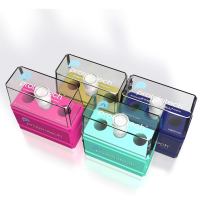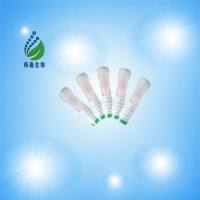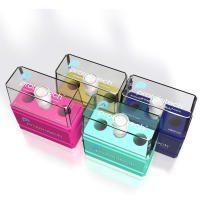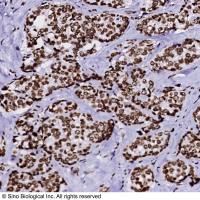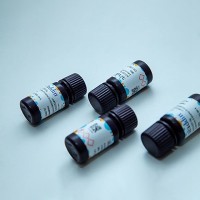H2-KK限制性NY-ESO-1抗原肽预测初探
互联网

MQAEGRGTGG STGDADGPGG PGIPDGPGGN AGGPGEAGAT GGRGPRGAGA ARASGPGGGA PRGPHGGAAS GLNGCCRCGA RGPESRLLEF YLAMPFATPM EAELARRSLA QDAPPLPVPG VLLKEFTVSG NILTIRLTAA DHRQLQLSIS SCLQQLSLLM WITQCFLPVF LAQPPSGQRR
THRESHOLD: The Threshold is a pre-defined numerical value used to make decision.
(责任编辑:大汉昆仑王)The threshold is defined as the 'percentage of best scoring natural peptides'(PSC). For example, a threshold of 1% would predict peptides in any given protein sequence that belongs to the 1% best scoring natural peptides. The threshold values are derived as follows: Peptide score for all valid Peptide Frames in SWISPROT are calculated for any given matrix. Peptide Frames are sorted based on their Peptide Scores, and the score values corresponding to the 1%, 2%, 3%, etc. best scoring peptides are determined. Thus, the threshold correlates with the PSC value and is therefore an indicator for the likelihood that the predicted peptides are capable of binding to a given HLA molecule. The % threshold parameter allows the user to select different stringency levels, in order to modulate the prediction results: a lower threshold corresponds to a high stringency prediction, i.e. to a lower rate of false positives and to a higher rate of false negatives. In contrast, a higher threshold value (low stringency) corresponds to a higher rate of false positives and a lower rate of false negatives. In short, from the same protein sequence input, a threshold setting of 1% will predict a lower number of peptide sequences and for a lower number of alleles, compared to 2% or higher thresholds; however, this will ensure a higher likelihood of positive downstream experimental results. Normally, at least for a first round of screening, threshold values higher than 3% are not desirable, since the rate of false positives can increase the size of the predicted repertoire to an amount unacceptable for later experimental testing. |


